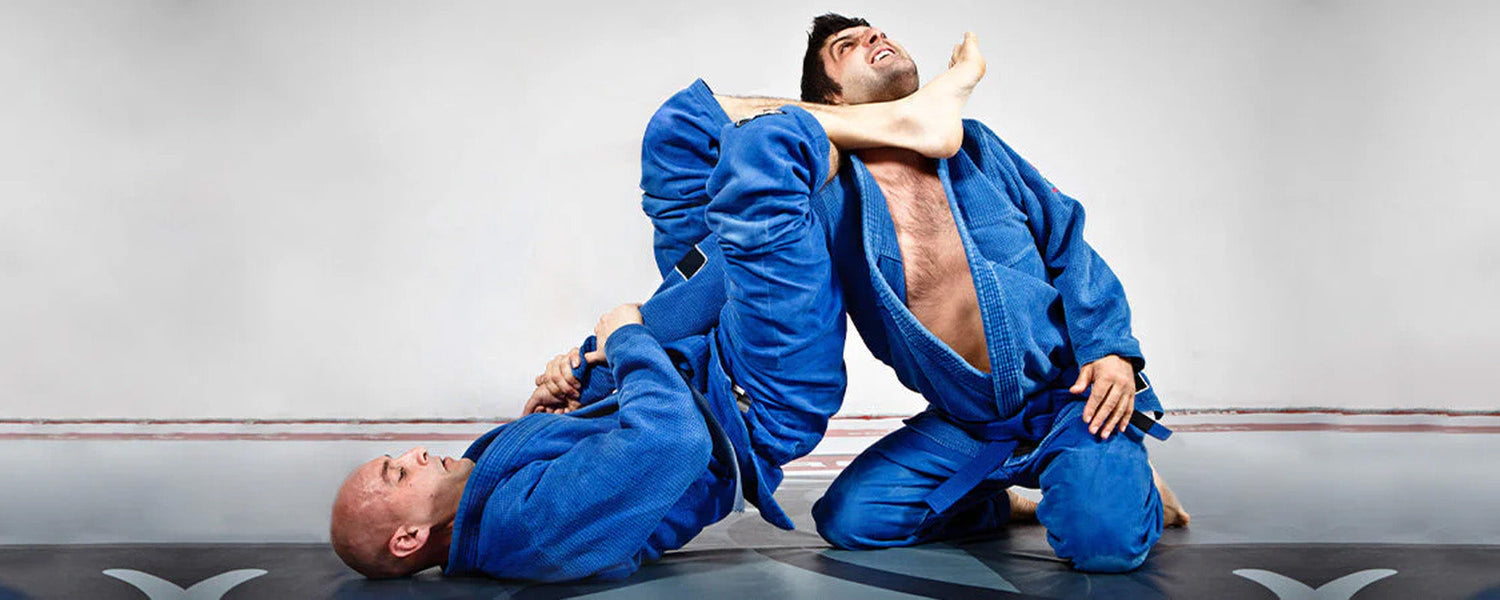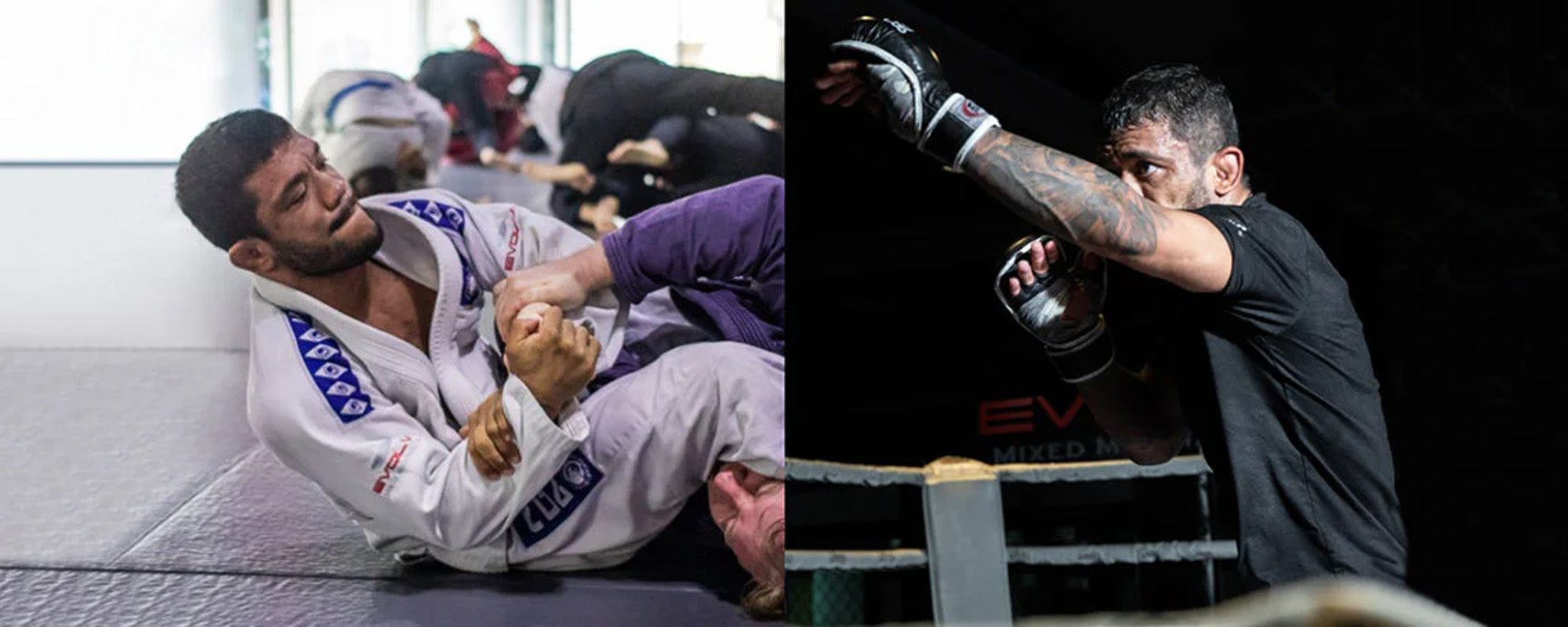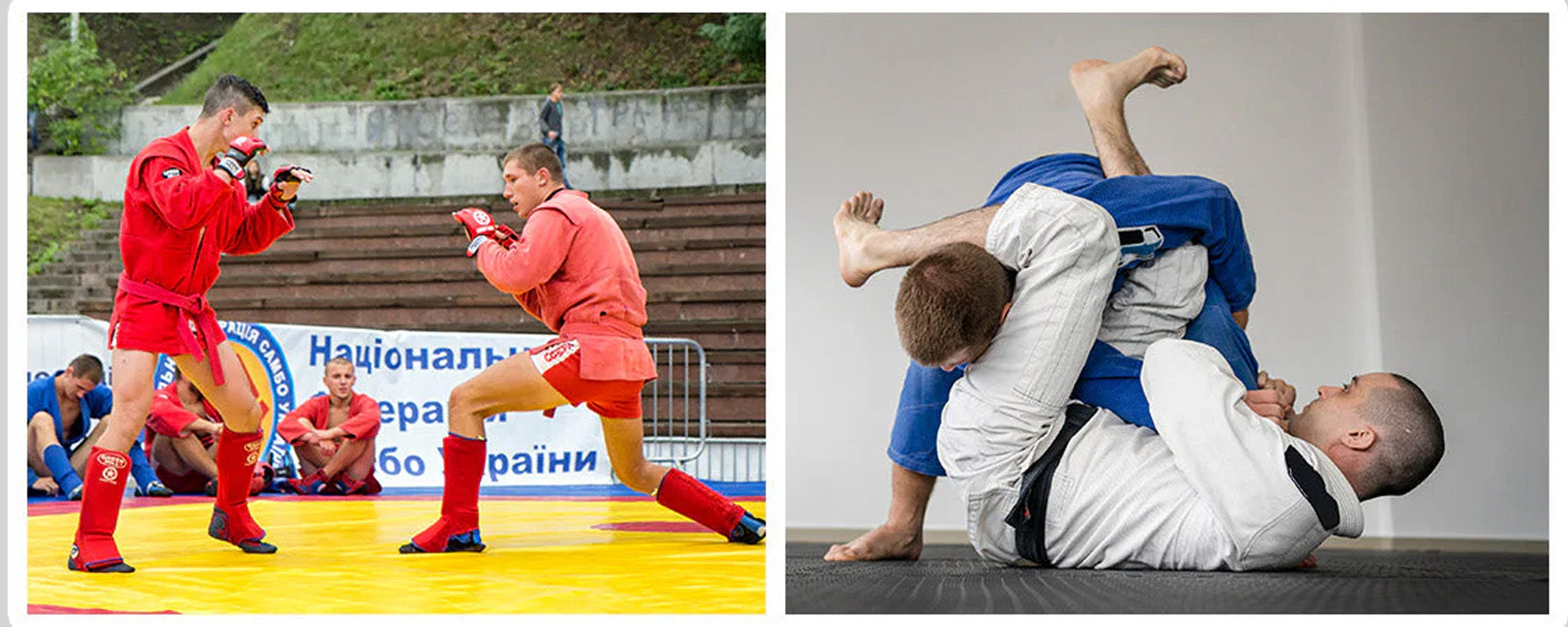The martial art of Brazilian Jiu-Jitsu is renowned for its joint locks and submission holds – but the question remains when caught in a submission, should you tap out early or try to hold on?
Table of content
When tapping out is much more important and can mean distinguishing between a safe and enjoyable training session and a bad injury. This article examines the decisive or indecisive nature of tapping out early versus trying to hold on to a BJJ submission.
1. Important Lesson In Jiu-Jitsu: Tapping Out
One of the most difficult situations in Jiu-Jitsu is how and when to tap out. Tapping out means submitting to your opponent, accepting defeat, and accepting it with an open heart. It signals that you can no longer continue the fight safely and admit defeat, or you prioritize your health over short-term ego sacrifice.
This may seem contradictory, but when caught in a deadly submission, taping early is recommended by every BJJ coach for protection and safety.
2. Benefits of Tapping Early

To succeed in BJJ, you must recognize opportunities and capitalize on them using agile mobility and timely application of techniques. Being a BJJ practitioner, tapping early can provide a variety of advantages for you. So, let’s get started.
2.1. Prevent Serious Injuries
In BJJ, tapping is a sign of submission or accepting defeat in BJJ, which occurs when an opponent concedes that they are in an inescapable hold or position. However, tapping out as soon as possible can avoid serious injuries that may occur if you attempt to resist the submission for too long.
Additionally, depending on the hold applied by your opponent, the longer a practitioner resists the submission attack, the greater the chance of suffering from unconsciousness or other serious injuries.
2.2. Reduce the Risk of Substantial Damage
Tapping out early can help reduce the risk of substantial damage because it ends the match before you sustain any serious injuries. It is always important to listen to your body and know your limits when training or competing in jiu-jitsu or other martial arts.
Suppose you are in a dangerous situation or cannot defend yourself. In that case, it is better to tap out and live to fight another day than to try to learn from the mistakes rather than potentially suffer from serious injuries.
2.3. Learn more about Your Opponents
When competing in submission grappling, an idea about your opponents' habits and strategies can give you an edge. To learn more about your opponents, it’s required to observe their style, approach, weaknesses and defensive/offensive techniques before facing them.
BJJ practitioners try to apply chokes, arm locks, leg locks, shoulder locks, back takes or other submissions depending on their skill level. Watching videos of your opponent’s previous matches will help identify what techniques they will likely favor during a match-up with you. This knowledge can be utilized to plan out tactics that could thwart any attempt at submitting you and allow you to gain the upper hand.
2.4. Help to Develop Better Strategies
Developing better strategies with early tapping can help you become more aware of your opponent’s submission attempts and improve your overall defense game.
Early tapping allows you to recognize the impending danger of a submission attempt while still having some control over the situation—before it’s too late.
If a practitioner waits too long or resists tapping, he may get injured or put into an even more dangerous position by his opponent. Therefore, understanding when and why to tap is crucial for improving one’s skills in BJJ.
3. Drawbacks of Tapping Early
Early tapping in Brazilian Jiu-Jitsu submission has become popular, but it has some drawbacks.
- One potential drawback is that it can affect your confidence and mental toughness. It can be frustrating or disappointing to tap out, especially if you could have continued the match. However, it is essential to remember that tapping out is a normal part of BJJ grappling and is not a sign of weakness. It is a way to communicate that you are vulnerable and need the match to end for your safety.
- After being submitted by an opponent, overcoming the remorse or hiding from the natural self judgemental tendency is challenging. Be easy on yourself.
4. Tapping in Jiu-Jitsu: Ways and Misconceptions
Tapping can be done by hand stroking your partner or yourself with an open palm on any body area that your opponent can feel or the referee can see. When tapping out, it is vital to recognize the importance of mutual respect between partners.
Acknowledging defeat in this manner shows respect for both competitors, allowing you to move forward with practice without fear of serious injury or harm. Furthermore, opponents should also respect their partner’s decision to tap out; continuing the force or submission hold even after someone has tapped is dangerous, disrespectful, and against the BJJ regulatory authorities.
5. Ways to do Tapping
Tapping is a vital part of BJJ and the moment that makes the decisive win the already lost moment between rivals and the competitors. Here are some ways for effective tapping in BJJ:

- First, create an audible sound, such as clapping your hands or slapping the mat. This signal is complex for your opponent to miss and will help them understand that you are submitting from the match.
- You can also verbalize by saying something like “I tap” or “I give up”.
- Make sure your voice is loud enough for your rival or referee to hear, so they know what is happening without guessing.
6. Misconception about Tapping
Many things need to be clarified about tapping. Tapping out is not an admission of defeat. Instead, it’s an opportunity to learn and progress in martial arts.
Firstly, tapping out does not mean losing the match or competition, but there is always a catch. When someone taps in their opponent’s submission hold, he protects himself from injury by signaling that he cannot escape anymore. This allows them to recover and use what they learned as a stepping stone for further growth and development as a martial artist.
7. The Importance of Submissions in Tapping Out
The focus of the sport lies in grappling and submissions, which are techniques used to finish off an opponent without striking them.
Submissions play a crucial role in how practitioners of BJJ can effectively tap out their opponents to end a match.
Recommendations involve various strategies that enable you to take control of the situation by submitting your opponent using minimal strength or force.
These techniques are essential for tapping out because they rely on proper technique rather than brute force, making it easier for practitioners of any size or strength level to submit opponents who may be larger or stronger than themselves.
8. Submissions Strategies in BJJ
Knowing the correct technique to use in different situations is good for success in BJJ competitions and self-defense scenarios.
Submission strategies include using which submission holds works best against certain opponents and how to apply them in different scenarios. Several types of submissions are available to practitioners, such as:
8.1. Joint Locks
Joint locks are used in Brazilian Jiu-Jitsu to force an opponent into submission. Joint locks involve manipulating a joint on the opponent's body beyond its normal range of motion, which can cause extreme pain.
Joint locks are widely used in BJJ for self-defense and competitive fighting. They are considered one of the most effective tools for submission grappling. These techniques can be applied to any joint, including elbows, wrists, shoulders, and ankles.
Practitioners need to use caution when applying joint locks due to their powerful nature; if done incorrectly, they can cause severe injury or even permanent damage.
8.2. Chokes
Chokes involve applying pressure to the neck, chest or throat to cause an opponent to submit. It can be either blood chokes, where pressure is applied to the carotid artery and jugular vein, or air chokes, where direct pressure is placed on the windpipe.
One of the most popular BJJ submissions is a rear naked choke. This involves using one's arms and legs to encircle an opponent's neck while controlling their body with leg hooks.
The goal is to create enough pressure on the carotid arteries that causes them to become constricted, causing unconsciousness within seconds if held long enough.
8.3. Leg Locks
It is a grappling technique that hyperextends and twists the knee joint. Leg locks are among some of the most effective BJJ submissions to control an opponent, as they can be applied quickly, with great technique, power, and precision.
Leg locks involve attacking the knee joint, which can be done by extending it past its natural range of motion or twisting it laterally to one side.
These attacks often cause intense pain due to the forced manipulation of ligaments and muscles around the knee joint, resulting in an immediate tap-out from the defending opponent if executed correctly. Some famous examples include ankle locks, heel hooks, and kneebars.
Understanding each technique's strengths and weaknesses will help you pick the best one during a match or situation. The most successful Gi and No-Gi practitioners focus on one or two submission strategies that they can use effectively against various opponents and scenarios.
9. BJJ Submission Tips for Beginners
BJJ submissions are the most efficient way to end a fight, but they require skill and technique to pull off. Whether you’re new to BJJ or looking for tips for your next match, here they are:
One of the most important keys to success in Brazilian Jiu-Jitsu is controlling your opponent’s posture. This helps prevent them from escaping and allows you to apply submissions more easily.
To gain control, try using pressure points like their collarbone, back of the neck, chin, or temples to push them into a compromised position.
Another helpful tip for beginners is learning to transition between submissions quickly and easily.
10. What are the Most Challenging BJJ Submissions to Perform?
Specific submissions can be challenging to perform correctly while performing BJJ with all the training accessories such as Gi, belt, rash guards, and spats. Some of the most difficult BJJ submissions to execute include:
One example of an incredibly hard submission is the arm-triangle choke, which involves wrapping your arms around your opponent’s neck to restrict their airflow and force them into submission. It requires precision timing and placement to be effective, and even small mistakes can cause it to fail.
Another complex submission is the omoplata shoulder lock, which uses the leverage from your legs to place pressure on your opponent's shoulder joint and force them into submission.
11. FAQs
11.1. What Choke/Submission Can You Do From the Full Mount?
The full mount gives you on top an advantageous position, allowing you to apply pressure and control your opponent’s movements.
11.2. How to Escape a Rear Mount Choke in Jiu-Jitsu?
To avoid rear mount choke submission, try these things.
- Focus on your opponent’s grip and arm positioning. If they have their arms crossed over your neck, use both hands to grab onto their elbows and push them away until there is enough space for you to slip out of the hold.
- Otherwise, if they use one arm for control, bring your hand up around their shoulder and rotate your body so you can escape downward towards the side opposite the arm holding you down.
11.3. What's a Better Submission Hold from Ankle Lock Kimura Locks?
An ankle lock is one of the oldest grappling techniques in BJJ and one of the most reliable ways to secure a tap out. To execute an ankle lock, you grasp your opponent’s foot with both hands and twist up their heel towards their hip while pushing down on their knee or thigh with your shoulder.
While the Kimura Lock technique involves using your arm to trap and control your opponent's shoulder and elbow joint from behind, creating an effective and often painful defense.
12. Last Words
Tapping out, or signaling to your opponent that you are in a submission hold and wish to end the match, is an amazing part of BJJ. The ability to tap out is a basic skill that can differentiate between a successful game and one filled with frustration.
But when does it make sense to tap early, and when should one try and hold on? The answer depends mainly on the situation at hand. In some cases, tapping early might be necessary to avoid serious injury.
For example, tapping out should be considered as soon as possible if your opponent has you in an armlock or shoulder lock and you begin feeling the pain that is getting worse quickly. So, decide wisely according to your BJJ arsenal scenario and enjoy playing the save game rather than giving up.













Leave a comment
This site is protected by hCaptcha and the hCaptcha Privacy Policy and Terms of Service apply.